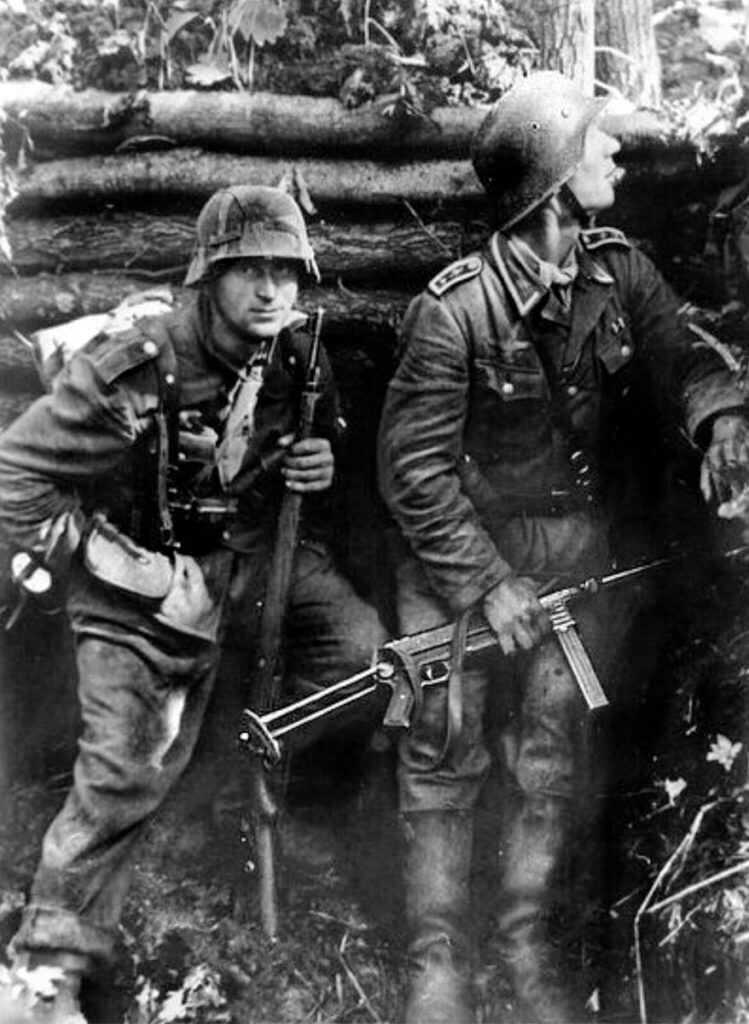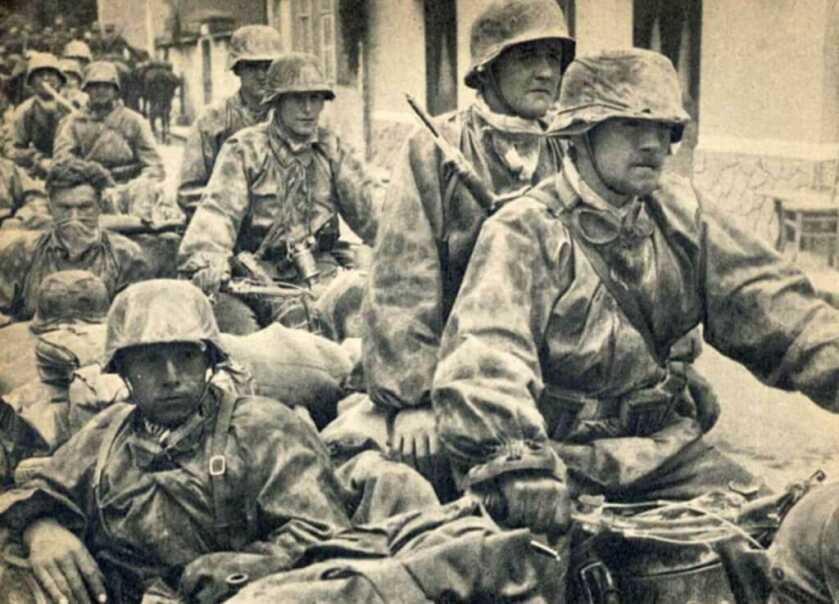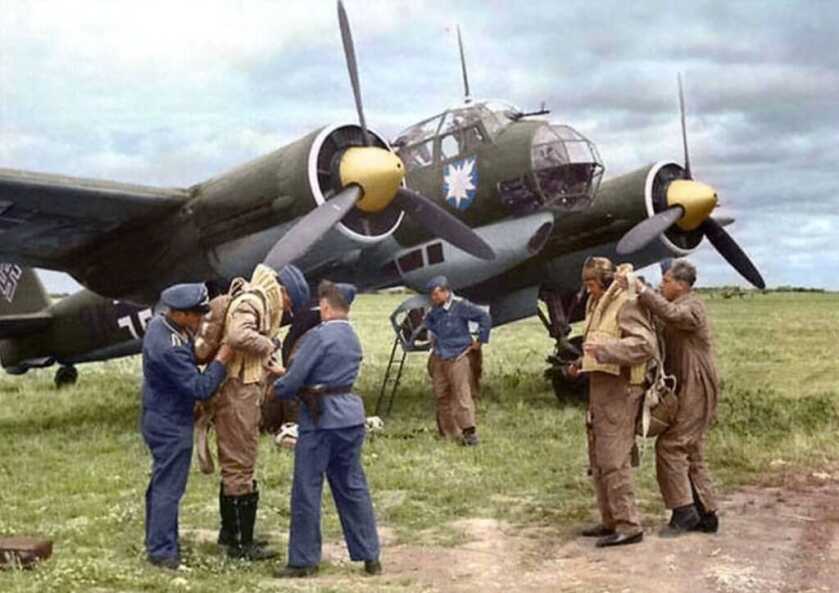
The man lived on his rural farm on the outskirts of his tiny Mississippi town. His yard was meticulously maintained, and Old Glory fluttered quietly in the breeze from an imposing flagpole set in concrete. The flag didn’t stay out overnight…ever. It had been raised and lowered every day on this pole for more than half a century.

He was the very image of a good Christian man of character. He had served as a deacon in his church and teased a modest living out of the farmland that surrounded his modest three-bedroom home. He had raised his kids well and selflessly helped his neighbors. Now well into his eighties, he had agreed to spend an afternoon with me and my young son.

The man was soft-spoken as we nursed our iced tea and soaked up every word. He looked off into nothing as his mind wandered back to very different times. Though we sat in peace, security, and comfort, his memory took him somewhere else.

This unassuming man described being a 19-year-old Infantryman heading ashore in a Higgins boat on June 6, 1944. His destination was Omaha beach. It was about 1400 in the afternoon.

He charged terrified down the open ramp into the very bowels of hell. Wrecked equipment and shredded bodies littered the sand, surf, and shale. The smell of cordite, dirty smoke, ruptured bowels, and death pervaded everything. German mortar and artillery fire still slammed into the beach as well as the advances inland.
A Steep Learning Curve

The man survived the Longest Day to advance with the Allied vanguard. A product of the Mississippi backwoods and a survivor of the Great Depression, this tough teenager found that he had a knack for soldiering. When his company needed intelligence he and a fellow Southern redneck boy would slip off into the night looking for trouble. Sometimes they came back with a prisoner. Sometimes not. The man told me he got comfortable with a knife in the dark.

By late August the man and his buddies had taken the full measure of the enemy. The hard fighting through the bocage hedgerows had brought him face to face with the Nazi superman. He found the German Wehrmacht to be a hardened professional fighting force.

He called the Waffen SS “those Gestapo men.” Decades later his hatred for these fanatical racist lunatics modulated the timbre of his conversation. He told me unapologetically, “We didn’t take many of those Gestapo men prisoner.”

He explained that the SS frequently left a couple of snipers behind when the Germans finally abandoned a position of strategic importance. The carnage they inflicted made little difference in the grand scheme. They just dealt death whenever they could.
Kill or Be Killed

My buddy’s unit was tasked to seize Orly airport outside Paris. The Luftwaffe had used Orly as a fighter and bomber base throughout the occupation of France, and the Allied air forces had pounded it into rubble as a result. In August of 1944, however, the wrecked aerodrome was deceptively quiet.

The company commander called a tactical halt. My friend and his battle buddy crept around the periphery of the wrecked airport before ascending one of the taller structures for a proper vantage. Taking cover such that they could just peer over the edge of the roof they finally saw the two German snipers. Tucked into a pile of debris on the roof of a nearby structure the two SS sharpshooters were well-camouflaged and fixated on the approaches to the aerodrome. The two Germans had no idea that they had only moments to live.

Speaking in hushed whispers my buddy and his comrade estimated the range to their targets and adjusted the rear sights on their heavy M1 rifles to compensate. My friend called the man on the left and his counterpart oriented on the one on the right. On the soft count of three, both men squeezed their triggers.

Both rifles rolled back in recoil as their 152-grain M2 ball rounds covered the distance to the pair of German snipers at 2,800 feet per second. Both of the American grunts had grown up with guns, and they knew how to shoot. Each GI center-punched the coal-scuttle helmet of his respective SS target, killing them both instantly.
The Guns

In 1936 the United States military was woefully behind those of most other major powers. The Great Depression had ravaged the American economy, and a lack of attention to military readiness had taken a horrible toll on such stuff as tanks and combat aircraft. The gleaming exception was the M1 rifle. American troops entered WW2 with what General George Patton described as, “the finest battle implement ever devised.”

Designed by a Canadian-American inventor named John Cantius Garand (properly pronounced, I’m reliably told, so as to rhyme with “errand.”), the M1 was a .30-caliber, gas-operated, 8-shot, clip-fed, semiautomatic rifle. The weapon weighed 9.5 pounds and was 43.6 inches long. By the time the M1 reached US Army troops in 1937, production at Springfield Armory was ten rifles per day. Two years later output languished at 100 per day. By the end of the weapon’s massive production run, however, some 5.4 million had been made by four major manufacturers.

By modern standards, the M1 was heavy, cumbersome, and grossly overpowered. However, at the outset of the Second World War, the M1 was a wonder weapon. Ammunition was supplied in spring steel 8-round en-bloc clips that were pressed in place from above with the bolt locked to the rear.

En bloc simply means that the ammunition clip became part of the weapon’s action during firing. When loading the rifle, the operator pressed the clip down from above and snatched his thumb clear as the bolt automatically flew home. The clip was ejected out of the top of the action after the last round fired.

An M1 rifle cost Uncle Sam about $85 during the war. That’s about $1260 today. The M1 was rugged, accurate, and powerful. I have never spoken with a combat veteran who carried one who had anything but unvarnished praise for the piece.
The Rest of the Story

There was a still a great deal of fighting left to be done after my friend and his comrades cleared Orly airport. There is no telling how many lives these two young warriors saved just in this one exchange. However, the worst was yet to come.

The Ardennes Offensive has become known as the Battle of the Bulge from the vantage of comfortable hindsight. My buddy said at the time it was pure unfiltered chaos. German Army Group B led by Joachim Peiper and the 1st SS Panzer Division slashed deep into Allied territory, shredding American defenses and scattering combat units randomly among the detritus. The US response devolved into tiny packets of troops fighting for their lives. My pal found himself leading a handful of bedraggled survivors deep behind the German spearheads.

Otto Skorzeny’s Operation Greif involved the insertion of English-speaking Germans in American uniforms to sow confusion in Allied rear areas. The effect that had on the Allied defense was outsized beyond their pure numbers. Suddenly nobody trusted anybody they didn’t already know well, and jumpy sentries shot first and asked questions later.

After a protracted escape and evasion, my buddy’s motley band finally made it back to friendly lines exhausted and spent. The first sentry they encountered covered them with a BAR and demanded to know who won the World Series in a particular year. My buddy not so gently explained that he had no idea. He expounded that while the Yankees were comfortably enjoying their baseball he was out hunting opossums in the Mississippi swamps to keep his family from starving. The sentry let them pass.

My buddy rendered his professional opinion on all of the major US small arms. He explained that there was always only one M1. The M1 Carbine was simply the Carbine, and the M1A1 Thompson was always the Thompson. Nobody used the term Garand. The standard US Infantry rifle was always just called the M1.

He said for an entire year some part of his skin was touching that rifle. Awake, asleep, shaving, eating, or defecating, that weapon was always at arm’s reach. He said that the Carbine was an effective and handy combat tool, but that it did frequently require several shots to take a German soldier out of the fight. By contrast, he said that so long as you caught him center of mass, the M1 would put an enemy soldier down instantly every single time.

We went back to the man’s barn neatly populated with tractor components and the sundry detritus of a working farm. The open building smelled like motor oil, horse manure, and dirt. Hanging obscurely in the corner was a dusty German helmet, the faded SS runes still visible. There was a .30-caliber hole running cleanly in and out both sides. How do we make such men as these?




Thank you Mr. Dabbs for another terrific battlefield recollection.
Served in Vietnam. We had M14 rifles. Our young men will step up as needed as they have in Iraq and Afganistan. Semper Fi.
Great article. While a young man living in the U.S. Territory of Puerto Rico, my Great-Uncle Juan joined the Marines and fought in the Battles of Guadalcanal and Okinawa during WWII. Sadly, he passed away before I was old enough to ask him whether he used an M1 Garand or an M1 Carbine during the war. I’m now the proud owner of an M1 Garand I got from the CMP. Please keep these great stories of our country’s history coming!
Thanks for yet another excellent historical article!
One nit pick…”smell of cordite” on D Day beach. Only on the Brit invasion beaches. If the Brits were still using cordite that late.
I never tire or reading articles like this. My father landed in North Africa and then went on to land in Solerno, Italy. He trained as an anti-aircraft artillery crewman, but was transferred to tanks before going to Italy. He made the whole trip from Solerno to Rome, including the infamous Rapido River Crossing. He had three tanks shot out from under him and survived with only minor wounds and the loss of all his teeth. Each time, he told me he was glad he had ditched the M1 Carbine issued to him as a tanker and “acquired” a Garand to carry when he was on foot.
Have one. Love shooting it. Sometimes… just to see what might happen I use it as my trunk rifle.
Yesterday on July 4 th I sat and drank beer, ate good food and laughed with my family and friends. I wore my favorite t-shirt. It reads; Freedom isn’t Free. There is an image of a gravestone with a soldiers boots his rifle and an American flag.
Thank you for the wonderful article Dr Dabbs and if you ever get the chance thank your friend too. The stories of these great men need to be documented and published before they are all gone.
I like hearing these old war stories. We are losing these Veterans at a pretty steady, accelerated rate now days. It is a shame so many of their stories will be lost with their passing.
I’m currently awaiting my CMP M1 Garand. CMP will teach you patience, but the rewards tend to be very nice. Just can’t locate the appropriate .30-06 ammo anywhere. Apparently, it is not as high priority for manufacturers as 9mm, 5.56, 7.62×51, and .45 during this shortage.
But has a recent article or video been made featuring the M1 that does not include a mention or allusion to “M1 thumb”?
Doctor Dabbs, you are just what the doctor ordered! Your knowledge is extraordinary, and your erudition is unrivalled in today’s firearms scriveners. I eagerly anticipate your articles, both online and in print.
I remember being NCOIC in the mid 70’s teaching the bayonet course. Bent the tubes on M16A1’s left and right. An officer scared up some M1 Garrands and M14’s and what a difference. When thrusting with a rifle with fixed bayonet weight is your friend. Penetrating through ribs ( breaking them) and the breastbone takes sharp steel plus mass. The M16 only has one of those qualities. Another is withdrawing a bayonet from the enemy chest cavity. A bayonet stuck in ribs requires standing on top of the enemy and twisting, yanking on the rifle. The M16 also failed in this respect. Short term solution was for the genius’s in the Army supplying plastic- yes you heard right, M16’s for bayoney course use. Later the Heavy barrel M16 A2- A3 I think resolved the problem of bent tubes- sort of. Maybe those old timers got it right all those years ago?
Keep up the good work, Will. The PROPER history of our Nation must always be shared and taught. I still fear however, that our next major war will be fought here on our own doorsteps… between those who love America, and those who hate her. May our Lord and Savior Jesus Christ return before then!
Great article. They were the greatest generation for sure. Only wish I could’ve talked with some of them. I have so much respect for their courage and sacrifice.
This must have been an older article. This fellow was about the age of my father . He would have been 96, not in his 80’s
Mt son and I had the privilege of visiting with this gentleman several years ago. He has since passed on, but he was one sincerely great American.
This maybe the best article I have ever read about what is was like to be in the European theater in WW2.
As a 66 year old man I fear for our country if another such event breaks out. 18 and 19 year old young men today from what I see do not have “The Right Stuff “ to save the world like the greatest generation did.
RGW in NC
I disagree, but hopefully there are still enough around. I live near Parris Island. Friday I went to get a haircut, and a new class of boots had just graduated. Family members had all kinds of commemorative t-shirts. There was a black man wearing a t-shirt that read “I taught my son to stand up for himself. Now he stands up for his country. I couldn’t be prouder”. I think the son likely has the stones to charge ashore on Omaha Beach, if for no other reason than his father expects it of him, and he knows it. To allegedly quote another WW2 NCO, “You, you, and you, panic. The rest of you, come with me.”
With all due respect sir… If you wish to be taken seriously on this platform, you should probably lose the “personal pronouns”. Imaginary titles tend to reduce, not increase, one’s credibility.